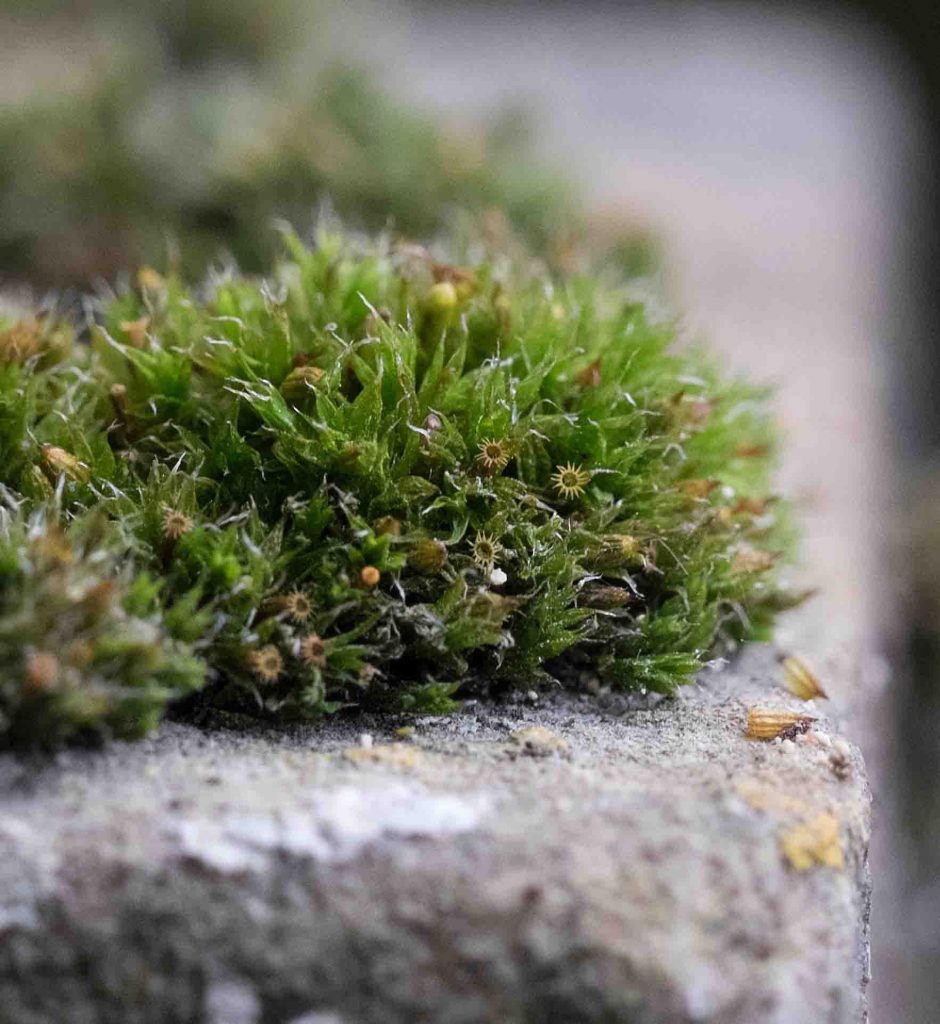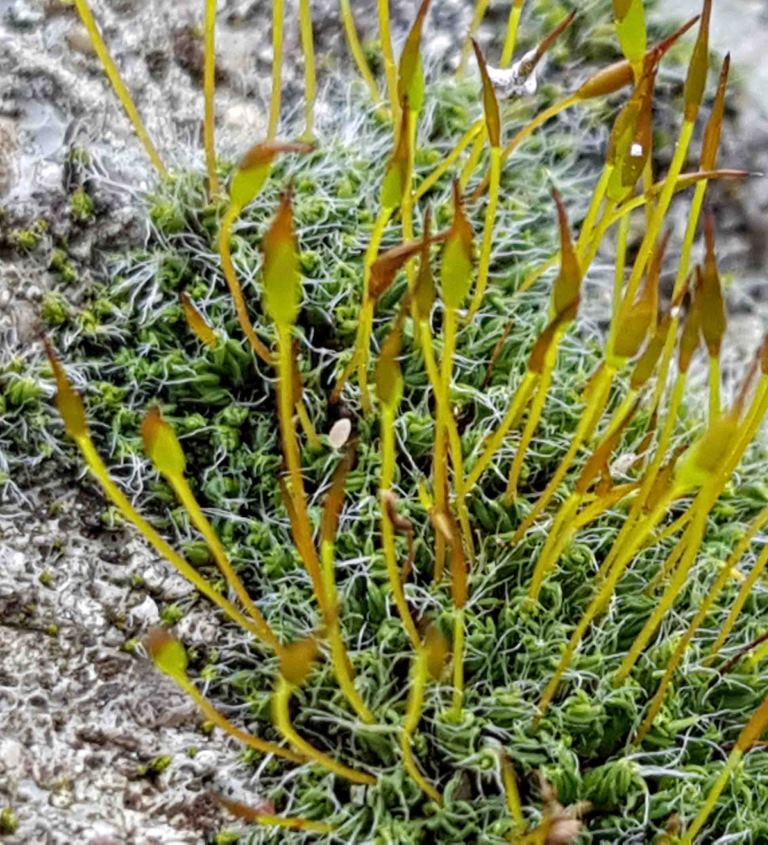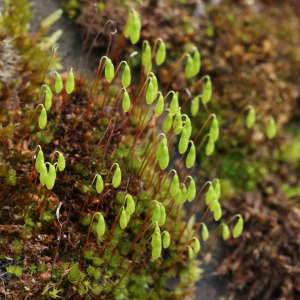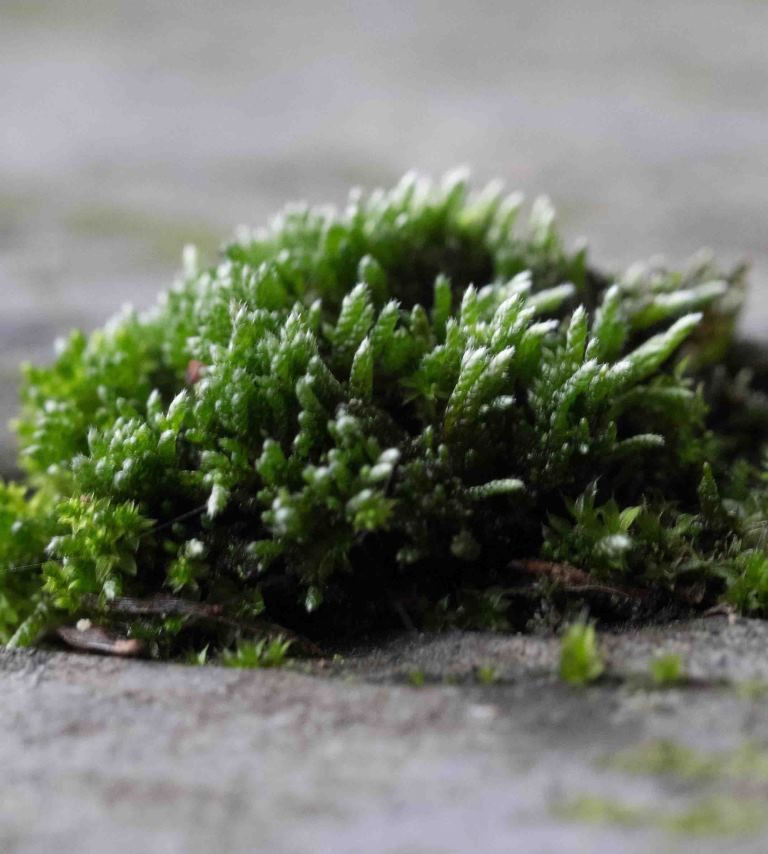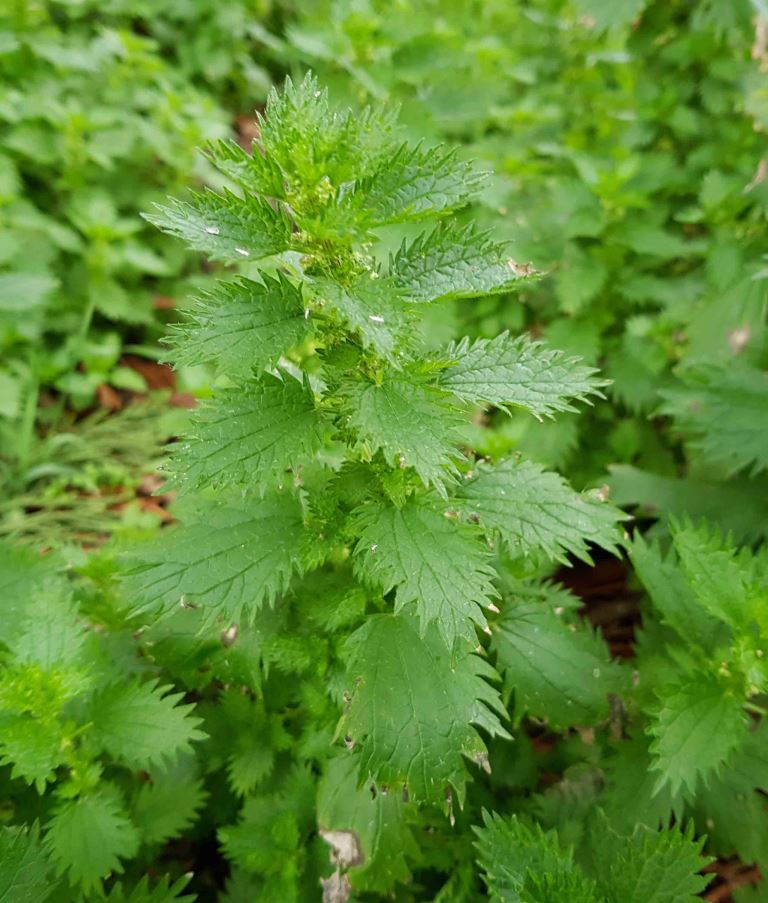A stretch of riverbank and a quiet cemetery in Wallingford provided the venue for the Annual Moss Walk on 2 March, led by Sean O’Leary, ably helped by Sue White. Heading north along the river from the Boathouse pub, members examined riverside willow trees for ‘epiphytic bryophytes’, mosses and liverworts whose preferred habitat is tree bark. Typical species such as Syntrichia latifolia, Orthotrichum affine, Leskea polycarpa (richly fruiting as usual), Cryphaea heteromalla and Orthotrichum diaphanum, with white hair-points on its leaves, were soon found. Other species of more catholic taste were also seen on stone, tree and soil, such as Brachythecium rutabulum, Kindbergia praelonga and Tortula muralis.
A short detour brought us to a walled cemetery, always an exciting venue for the moss-enthusiast, providing a variety of habitats including lawns, paths, old walls and undisturbed gravestones of non-local material such as limestone. Several Didymodon species were added to the list including D. vinealis, D. insulanus and D. sinuosus, as well as Grimmia pulvinata with its swan-necked capsules. Bryum capillare on the cemetery wall had distinctive bright green dangling capsules, while the slate roof of a low building had tiny silvery cushions of B. argenteum. A patch of Small Nettle was identified by the botanists. Returning to the river, a rotting log provided the substrate for an unusual find by Sue – initially thought to be the scarce Brachythecium salebrosum, microscopic examination revealed the moss to be the commoner Brachythecium mildeanum, growing in a very unusual habitat. It is normally confined to paths and scrappy soil, often referred to by moss-enthusiasts as ‘car-park moss’. The weather began to look a little threatening at this point so members decided to head back home along the river, where, to round the day off nicely, they were rewarded with a good view of a Kingfisher, a common sight in the area.
Syntrichia latifolia Orthotrichum diaphanum growing on stone cross in Wallingford cemetery Tortula muralis Bryum capillare Bryum argenteum Small Nettle
Pictures by John Thacker, Sue White and Laurie Haseler
Riverside:
Oxyrrhynchium hians (on the ground)
Amblystegium serpens (a tangle of very fine shoots)
Amblystegium humile (uncommon, on a branch at water level)
Grimmia pulvinata (with capsules bending down)
Hypnum cupressiforme
Syntrichia latifolia
Syntrichia ruralis
Leskea polycarpa
Orthotrichum affine
Cryphaea heteromalla (capsules all on one side of the shoot)
Radula complanata, a leafy liverwort
Cemetery:
Tortula muralis with capsules sticking up
Homalothecium sericeum (silky when dry) (also on trees on the riverside)
Syntrichia montana
Didymodon vinealis
Didymodon sinuosus (wavy leaves with the tips broken off)
Bryum capillare with dangling capsules
Dicranoweisia cirrata (with capsules like a pincushion)
Orthotrichum anomalum (tufts with sticking-up capsules, on gravestones)
Orthotrichum diaphanum (also on trees – grows on anything)
Schistidium crassipilum (with red capsule lids, on gravestones)
Rhytidiadelphus squarrosus (in turf, nice to walk on)
Bryum argenteum (little silver catkins)
Barbula convoluta (tiny and bright green)
Pseudoscleropodium purum (in turf)
Also Small Nettle, Sweet Violet and Red Dead-nettle in flower.
Path and hedges:
Rhynchostegium confertum with shiny brown capsules
Brachythecium rutabulum
Brachythecium mildeanum (on a rotten log)
List by Sue White


